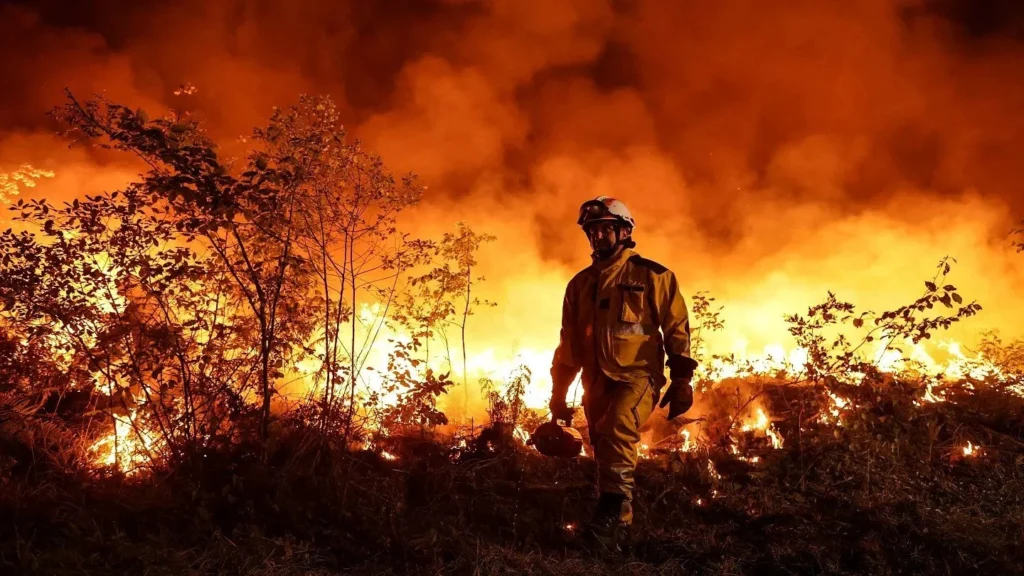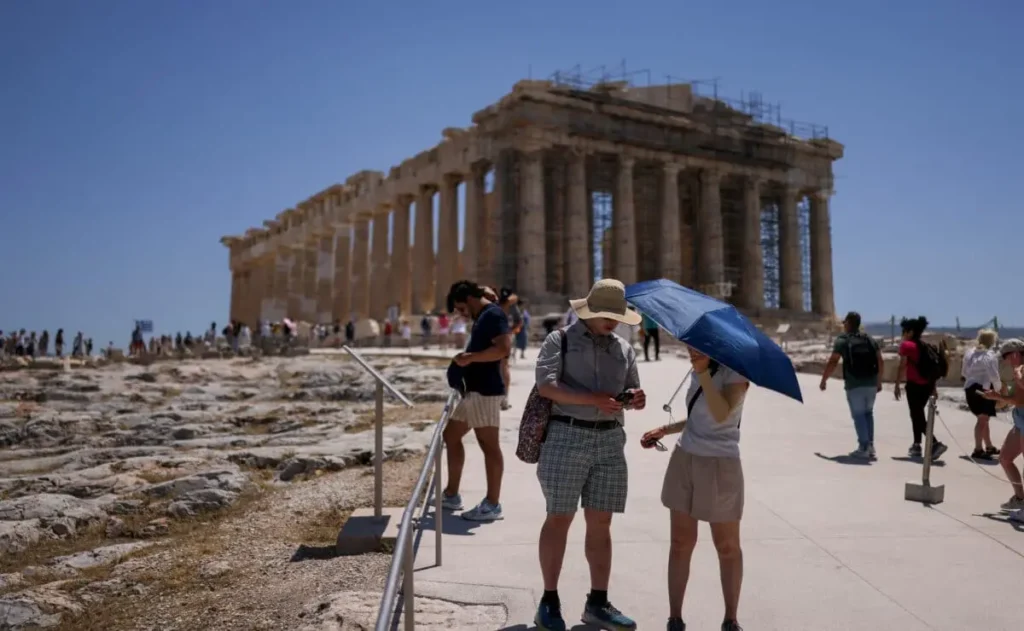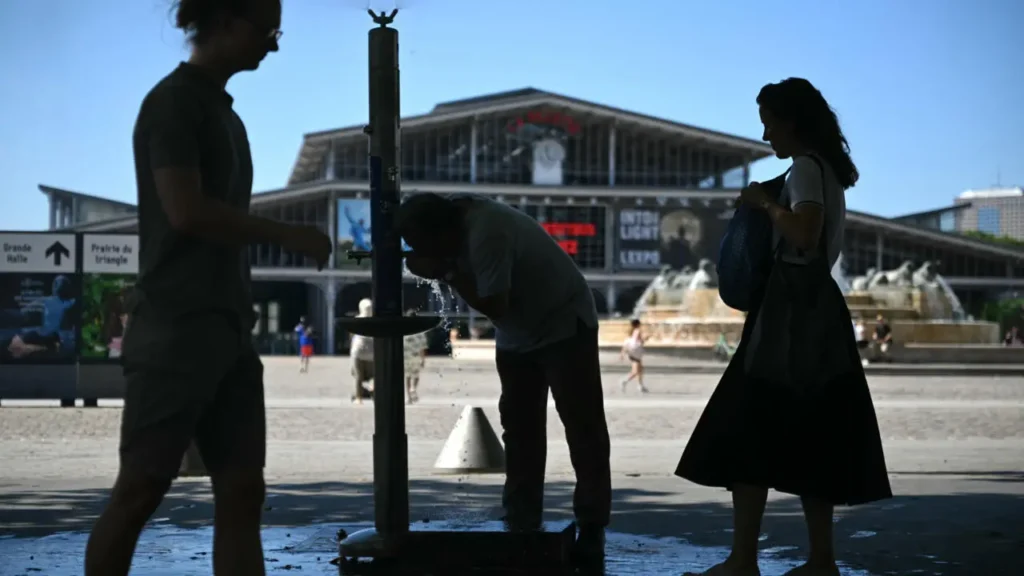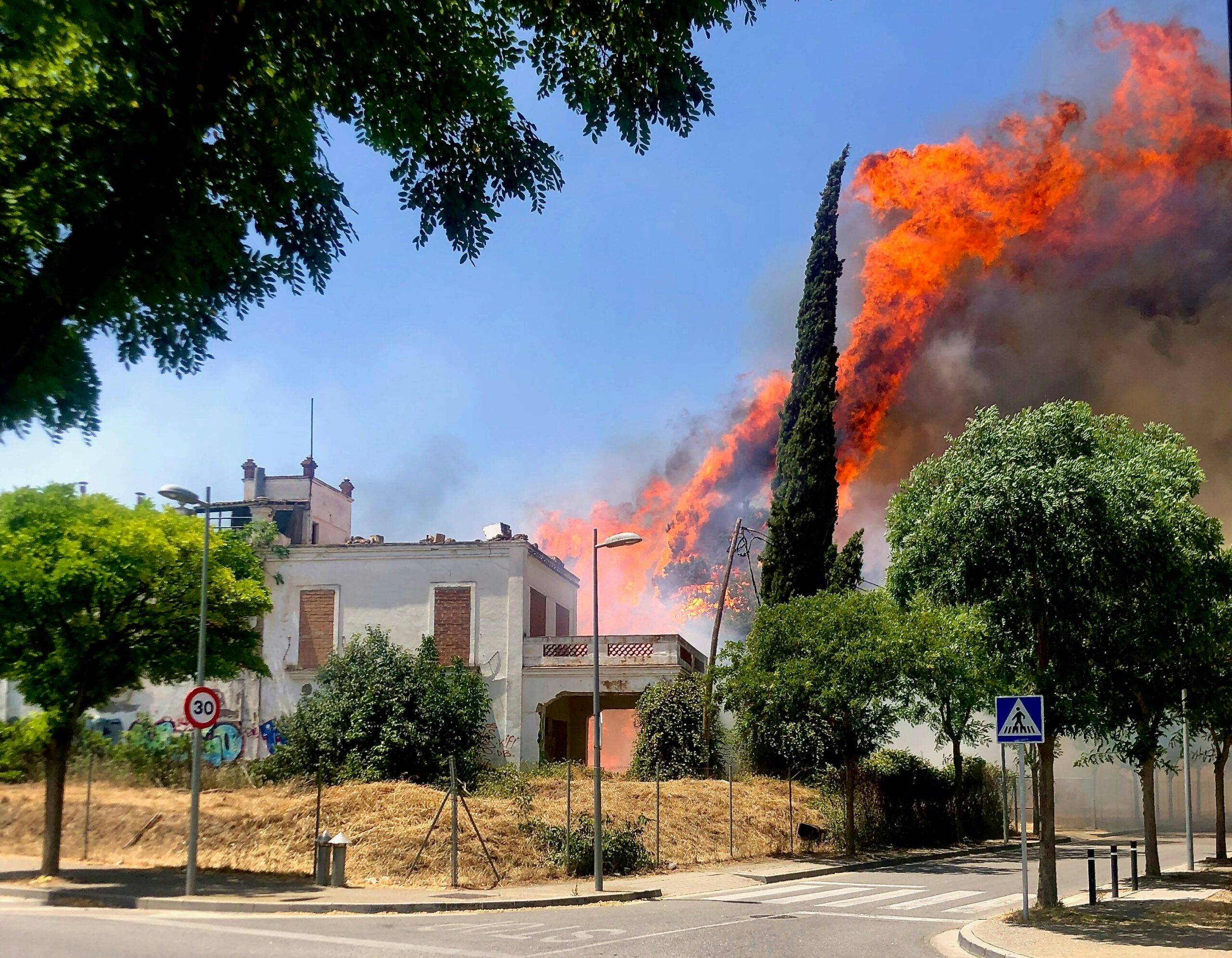Fires Break Out as Europe Heatwave Intensifies. As Europe grapples with another scorching summer, a series of backfires has erupted across multiple countries, driven by extreme heat waves and droughts. The grim temperatures aren’t only setting new climate records but also pushing formerly fragile ecosystems and structures to the point. From Portugal to Greece, Italy to France, dear are consuming timber, venturing into communities, and transferring large amounts of money into the sky — a fiery wake-up call about the rising costs of global warming.

A Summer of Flames Across Southern Europe
In recent weeks, backfires have broken out in several southern European nations, where temperatures have soared well above 40 °C( 104 °F). Southern Italy and Sicily have reported widespread evacuations as fires have destroyed homes and sightseeing areas. In Greece, authorities declared a state of emergency in corridors of the country after fires broke out near Athens and on several islets, including Rhodes and Crete. The Greek Fire Service battled over 100 backfires in just 24 hours, numerous of them fueled by dry foliage and strong winds.
Spain and Portugal have also seen multiple fire incidents, with emergency services floundering to contain the blazes. In Portugal, further than 5,000 hectares of land were destroyed in just a many days, and thousands of residents were forced to flee. Firefighters have been stationed en masse, backed by copters and water bombers, but the scale and speed of the fires remain daunting.
Record-Breaking Heat Fuels the Infernos
Meteorologists confirm that the ongoing heatwave is among the most severe in European history. Metropolises like Rome, Madrid, and Athens have all recorded some of their loftiest-ever temperatures. In some areas, nights remain dangerously hot, with little relief, adding the threat of heat-related illnesses and complicating firefighting sweats.
The Copernicus Climate Change Service reported that June and July 2025 have been among the hottest months on record, and early vaticinations prognosticate further heat to come. This implacable heat, combined with months of low downfall, has created the perfect storm for backfires — dry, brittle foliage ready to enkindle at the slightest spark.

Environmental and Economic Toll
The environmental consequences of these fires are ruinous. Timbers rich in biodiversity are being reduced to ash, hanging wildlife, and long-term ecological balance. The fires also release significant quantities of carbon dioxide into the atmosphere, contributing further to climate change in a vicious cycle.
Economically, the risk is stunning. The tourism sector — a major industry in countries like Greece, Italy, and Spain is especially vulnerable. Popular holiday
spots have been vacated, and hoary skies discourage callers. Crops and beasts have also been lost, driving up food prices and straining original husbandry.
Health Hazards and Human Impact
Beyond property damage, backfires pose serious health pitfalls. Bank inhalation can complicate respiratory conditions, and dragged exposure is particularly dangerous for children, the elderly, and those with preexisting ailments. In affected areas, air quality has declined, forcing residents to stay outdoors or wear defensive masks.
Fires Break Out as Europe Heatwave Intensifies, Hospitals have reported an increase in heatstroke and dehydration cases, and internal health challenges are growing as communities deal with trauma, relegation, and inquiry.
Emergency Response and Government Action
European governments have activated emergency protocols and requested support through the EU Civil Protection Mechanism. Firefighters from across the mainland, including Germany, France, and the Netherlands, have been dispatched to help battle the blazes. The European Union has also transferred technical aircraft and equipment to help original sweats.
Still, officers advise that fire services are stretched thin and that the sheer number of fires makes coordinated response delicate. Calls are growing for better preparedness, investment in fire-resistant structures, and a shift toward long-term climate mitigation programs.

Climate Change: A Clear Catalyst
Experts and climate scientists agree that these fires aren’t isolated incidents — they’re part of a broader pattern linked to mortal- driven climate change. The Mediterranean region is warming 20 times faster than the global normal, making it a hotspot for climate-related disasters. Longer summers, reduced downfall, and advanced average temperatures produce the perfect breeding ground for backfires.
According to the Intergovernmental Panel on Climate Change( IPCC), similar extreme events will only become more frequent and violent unless greenhouse gas emissions are drastically reduced. The current extremity is a pictorial illustration of what unbounded climate change looks like in real time.
Community Resilience and Adaptation
Despite the destruction, stories of adaptability and community solidarity are arising. Levies have stepped in to support exigency services, while NGOs are distributing aid to those affected. Growers are banding together to cover their lands, and original residents are working tirelessly to protect creatures and secure heritage spots.
Authorities are also investing in early warning systems, firebreaks, and reforestation sweats to better prepare for future incidents. Still, experts stress that adaptation must be paired with aggressive mitigation — reducing emissions is the only way to help unborn summers from getting even deadlier.
A Wake-Up Call for Global Action
Fires Break Out as Europe Heatwave Intensifies. As fires continue to rage and Europe counts the cost, the current extremity serves as a dire warning. Climate change isn’t a distant trouble; it’s unfolding now with deadly consequences. While exigency measures can help manage immediate troubles, only global cooperation, sustainable practices, and strong political will can address the root causes.
Europe’s fiery summer of 2025 is a clear signal that the time to act on climate change is now, it’s moment.

Read More: Iran and Israel: History of Tensions, Conflict, and Uncertainty
FAQs:
The fires were substantially touched off by extreme heat, failure conditions, and strong winds, all worsened by ongoing climate change.
Which European countries have been affected the most?
Greece, Italy, Spain, Portugal, and France have endured the most severe backfires during this heatwave.
Yes, climate change is a major factor, leading to advanced temperatures, dragged famines, and more frequent extreme rainfall events.
Some regions in Southern Europe have recorded temperatures exceeding 45 °C( 113 °F), breaking major records.
The fires release large quantities of bank and other pollutants, drastically reducing air quality and adding health risks.
Authorities recommend checking original advisories, as numerous sightseeing areas have been evacuated or affected by fires.
Governments have stationed emergency services, activated EU Civil Protection Mechanisms, and entered into transnational firefighting support.
Knockouts of thousands of residents and excursionists have been evacuated across multiple countries to ensure safety.
While there have been reports of injuries and some losses, sanctioned figures vary by country and situation.
Stay informed through original cautions, prepare an emergency tackle, and be ready to act immediately if instructed.

